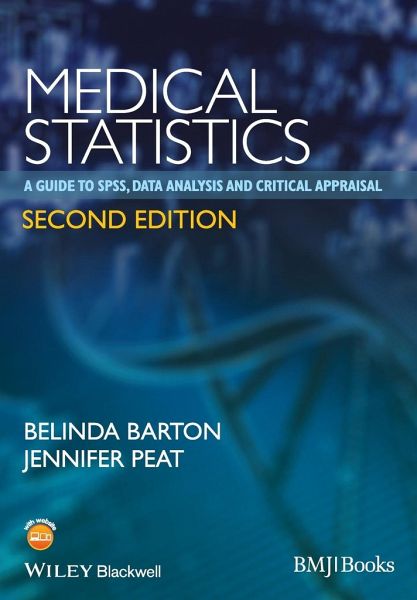
Medical Statistics
A Guide to Spss, Data Analysis and Critical Appraisal
Versandkostenfrei!
Versandfertig in über 4 Wochen
73,99 €
inkl. MwSt.
Weitere Ausgaben:

PAYBACK Punkte
37 °P sammeln!
Medical Statistics provides you with the essential knowledge and skills to undertake and understand evidence-based clinical research. This book is invaluable for researchers and clinicians engaged in a wide range of research studies. A practical, comprehensive, stepby-step guide is provided - from study design, required sample size, selecting the correct statistical test, checking test assumptions, conducting and interpreting statistics, interpretation of effect sizes and P values, to how best report results for presentation and publication. The SPSS commands for methods of statistical analyse...
Medical Statistics provides you with the essential knowledge and skills to undertake and understand evidence-based clinical research. This book is invaluable for researchers and clinicians engaged in a wide range of research studies. A practical, comprehensive, stepby-step guide is provided - from study design, required sample size, selecting the correct statistical test, checking test assumptions, conducting and interpreting statistics, interpretation of effect sizes and P values, to how best report results for presentation and publication. The SPSS commands for methods of statistical analyses frequently conducted in the health care literature are included such, as t-tests, ANOVA, regression, survival analysis, diagnostic and risk statistics etc. In addition, the most relevant corresponding output and interpretation is presented, with clear and concise explanations. Each chapter includes worked research examples with real data sets that can be downloaded. Critical appraisal checklists are also included to help researchers systemically evaluate the results of studies. This new edition includes a new chapter on longitudinal data that includes both a repeated measures and mixed models approach. Furthermore, all commands and output have been updated to IBM Statistics SPSS version 21 and SigmaPlot version 12.5. Data sets for this book can be downloaded from www.wiley.com/go/barton/medicalstatistics2e



